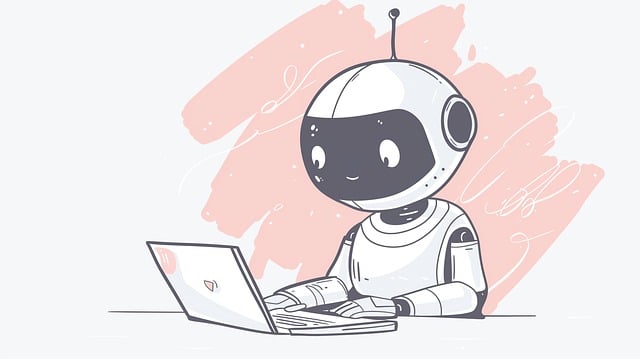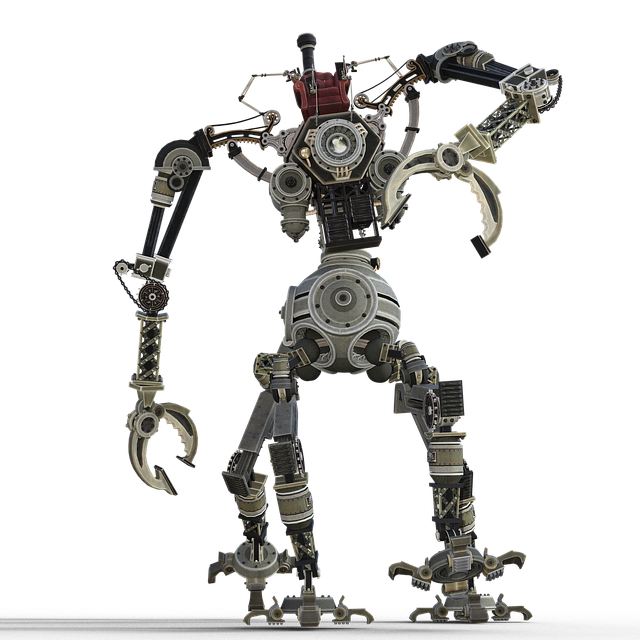AI chatbots have transformed human-machine interaction with natural, conversational interfaces powered by Natural Language Processing (NLP). Using algorithms and vast datasets, they analyze user inputs for context, sentiment, and intent to offer personalized responses in various applications like customer support, entertainment, and education. Key technologies include tokenization, part-of-speech tagging, parsing, and semantic understanding. Continuous learning ensures their accuracy and adaptability, enhancing user experiences with 24/7 availability, instant responses, and continuous improvement based on feedback. Ochatbot exemplifies this evolution in customer service, offering an efficient, cost-effective solution for businesses.
“Unraveling the mysteries of AI Chatbot technology is essential in today’s digital landscape. This article offers a comprehensive guide, from the foundational understanding of AI chatbots and their role in simplifying human-computer interaction to the intricate mechanisms behind natural language processing (NLP).
We explore how training with vast datasets and continuous learning enhance chatbot intelligence. Furthermore, we delve into the user communication process, revealing how these virtual assistants generate contextually relevant responses. Prepare to discover the evolution of AI chatbots and their potential to revolutionize customer engagement.”
- Understanding AI Chatbot Technology: The Basics
- How Natural Language Processing Enables Chatbots
- Training and Data: Fueling the Chatbot's Intelligence
- Chatbot Interaction: User Communication and Response Generation
- Continuous Learning and Improvement in AI Chatbot Development
Understanding AI Chatbot Technology: The Basics

AI Chatbot technology has revolutionized the way we interact with machines, offering a natural and conversational user experience. At its core, an AI chatbot is a computer program designed to simulate human conversation through processing and generating text-based inputs. These chatbots utilize advanced algorithms, particularly those within the field of Natural Language Processing (NLP), to understand and interpret user queries. By learning from vast amounts of data, they can generate contextually relevant responses.
The basic functioning involves users inputting questions or commands, which are then analyzed by the chatbot’s NLP engine. This engine identifies keywords, sentiment, and intent, allowing the AI to determine the user’s needs. Advanced chatbots can engage in multi-turn conversations, remembering previous interactions to provide more accurate and personalized responses. This technology powers various applications, from customer support and virtual assistants to entertainment and educational platforms, making everyday tasks easier and more interactive for users.
How Natural Language Processing Enables Chatbots

Natural Language Processing (NLP) is a cornerstone of modern AI chatbots, enabling them to understand and respond to human language in a meaningful way. By breaking down complex queries into simpler components, NLP algorithms allow chatbots to interpret user inputs, discern intent, and generate appropriate outputs. This process involves several key steps: tokenization, part-of-speech tagging, parsing, and semantic understanding.
Tokenization splits text into individual words or phrases, while part-of-speech tagging identifies each token’s grammatical role. Parsing analyzes the relationships between these tokens to construct a logical structure of the sentence. Finally, semantic understanding goes deeper, interpreting the meaning behind the words and context clues to deliver responses that accurately reflect user intent. This capability is what makes interactions with AI chatbots feel natural and human-like, enhancing the overall user experience.
Training and Data: Fueling the Chatbot's Intelligence

AI chatbots are powered by vast amounts of data and sophisticated machine learning algorithms. During training, these AI chatbots learn from large datasets containing human conversations. This process involves feeding the chatbot a wide range of potential user queries and providing it with appropriate responses. Over time, the AI chatbot’s model improves as it refines its understanding based on interactions.
The quality and diversity of data are crucial for an effective AI chatbot. Developers must ensure that the training data represents various conversational scenarios and contexts to prepare the chatbot for a multitude of user inputs. This rigorous training enables AI chatbots to deliver more accurate, contextually relevant responses, enhancing the overall user experience.
Chatbot Interaction: User Communication and Response Generation

Continuous Learning and Improvement in AI Chatbot Development

AI chatbots are not static; they continuously evolve and improve through a process known as continuous learning. As users interact with these intelligent assistants, their algorithms analyze vast amounts of conversation data to identify patterns, refine understanding, and enhance response accuracy. Machine learning techniques play a pivotal role here, enabling AI chatbots to adapt to new information and user preferences over time. This dynamic nature ensures that each engagement becomes a learning opportunity, allowing chatbots to provide more relevant, contextually appropriate responses in future interactions.
Continuous learning also facilitates the identification of areas where AI chatbots can be further optimized. Developers can pinpoint challenges or inaccuracies in conversations, leading to iterative improvements. This ongoing refinement process is crucial for maintaining and enhancing user satisfaction as technology advances, ensuring that AI chatbots remain effective tools across diverse applications.
AI chatbots have revolutionized user interactions by mimicking human conversations. Through a combination of Natural Language Processing (NLP) algorithms, extensive training on diverse datasets, and continuous learning, these intelligent agents can understand and respond to complex queries. As the field advances, AI chatbots are becoming increasingly sophisticated, enhancing their ability to provide personalized and accurate assistance across various industries. By leveraging AI chatbot technology, businesses can streamline operations, improve customer satisfaction, and offer 24/7 support, making them indispensable tools in today’s digital landscape.
